Basic policy and response to climate change
The world is moving toward decarbonization in response to the global issue of climate change, so the Sanwa Group recognizes that our response to the climate change caused by global warming is an important management issue for business continuity.
In December 2021, the Sanwa Group announced the full endorsement of the recommendations of the Task Force on Climate-Related Financial Disclosures (TCFD) and analyzed scenarios following the disclosure items in these recommendations.
We will expand our range of environmentally friendly products, as defined in our Long-Term Vision; promote ESG material issues, including mitigation/adaption to climate change; prevent losses during disasters through products, services, and initiatives for a decarbonized society; and achieve our CO2 emission reduction targets. To reach these goals, we will develop and supply products with high energy-saving and heat-insulating properties to improve the energy efficiency of buildings. We will also reduce the environmental impact of our own business operations to bring about a low-carbon/decarbonized society. As well, we are analyzing climate change risks and opportunities, linking them to our business strategies, and achieving both sustainable growth and effective responses to risk.
Governance and risk management
The Sanwa Group has established and implements policies on all of the ESG themes through our Sustainability Committee, which meets quarterly to promote the Group’s sustainability management. Addressing climate change risks is positioned as an important issue for the Sustainability Committee, which confirms the progress of the activity policy and its direction.
| Board of Directors | Oversight of climate change response | Reports 4 times a year |
 |
||
| Sustainability Committee | Formulation of basic policy on climate change response Formulation of key issues related to climate change Chairperson: Representative Director and President of Sanwa Holdings |
4 times a year |
 |
||
| Quality, Environment and CSR Promotion Council | Examination of environmental and other issues for domestic Group companies | 2 times a year |
 |
||
| CSR Promotion Council | Examination of environmental and other issues for each company in Japan | 2 times a year |
| Board of Directors | Oversight of climate change response | Reports 4 times a year |
 |
||
| Sustainability Committee | Formulation of basic policy on climate change response Formulation of key issues related to climate change Chairperson: Representative Director and President of Sanwa Holdings |
4 times a year |
 |
||
| Quality, Environment and CSR Promotion Council | Examination of environmental and other issues for domestic Group companies | 2 times a year |
 |
||
| CSR Promotion Council | Examination of environmental and other issues for each company in Japan | 2 times a year |
Steps of scenario analysis
| Asses risks and opportunities |
|
|
 |
||
| Evaluate business impacts |
|
|
 |
||
| Identify response measures |
|
Asses risks |
|
|
 |
||
Evaluate |
|
|
 |
||
Identify response measures |
|
Strategy
Assessing climate related risks and opportunities
We identified climate-related risks and opportunities and their impact on our business as of 2030, and qualitatively assessed the magnitude of the impact.
Sanwa Shutter Corporation, on a nonconsolidated basis, is the target of this analysis because, as the core operating company, this company accounts for roughly half (50%) of the Group’s consolidated net sales, so the impact of these risks and opportunities are expected to be large.
| Anticipated risks | Anticipated impact on operations | |||||
| Cater gory |
Subcatergory | Further subcategory |
Outline | Risk | Opportunities | Impact |
|---|---|---|---|---|---|---|
| Transition Risks | Political/ Regulation |
Introduction of carbon taxes | Costs based on CO2 emissions | ・Rising costs from carbon taxes on CO2 emissions, such as fuel used at production sites and offices or on electricity bills, etc. |
・Increasing awareness of renewable energy ・Better preparedness for future carbon price increases and cost savings ・Increased competitiveness from low-carbon production and installation |
Large |
| Emissions targets | Costs incurred from higher targets |
・Transition costs for reducing emissions of business activities due to the Energy Conservation Act or stronger carbon emissions targets or mandated energy efficiency, etc. ・Alternative fuel vehicle transition cost |
・Production streamlining ・Increased opportunities to sell our products from rising customer awareness of energy conservation/efficiency ・Reduced fuel costs from transition to alternative fuel vehicles |
Large | ||
| Regulatory strengthening |
・Stronger regulations, including the switch to ZEB, ZEH and energy efficiency standards, etc. ・Legal requirement to use alternative or recycled materials |
・Rising demand, from tougher standards on home energy efficiency, for stronger insulation and materials made using renewable energy ・Rising awareness of the need to use sustainable raw materials |
Medium | |||
| Spread of renewable energy and energy-efficient technologies | ・Increased ratio of electricity from renewable sources supplied to factories |
・Develop market for services related to energy conservation ・Promote inhouse initiatives to increase renewable energy use |
Medium | |||
| Market changes/ Technology changes |
Procurement | Raw materials | ・Rising costs of main materials due to introduction of carbon taxes | ・Develop products using alternative materials | Large | |
| Investments in development and technologies | Investments for developing decarbonization or low-carbon technologies |
・Rising R&D costs for products that address climate change ・Increased cost of investments in production processes ・Increased transition costs to low-carbon technologies and production |
・Develop products using new technologies ・Promote innovations in manufacturing processes ・Address higher demand for facilities following the low-carbon transition |
Large | ||
| Reputation from investors |
・Worsening investors' reputation and affect fundraising by inadequate measures against climate change | ・Improvement investor reputation by recognition of climate change measures | Medium | |||
| Changes in consumer behavior |
・Growing purchasing behavior influenced by the environmental impact of climate change | ・Meet higher demand for products that help to mitigate climate change | Medium | |||
| Physical Risks | Chronic/ Acute |
Rising sea levels and growing intensity of extreme weather | Risks and response for process delays caused by extreme weather and flooding |
・Difficulty procuring materials and labor, etc., due to damages, etc., incurred by suppliers ・Increased manufacturing costs due to water restrictions resulting from droughts ・Halted operations, reduced production, and additional investment in renovations due to typhoons, etc. ・Declining asset value in regions with high flood risk and halted operations at factories, etc., due to flooding |
・Increased infrastructure construction, maintenance, and renovations as countermeasure against flooding, high winds and torrential rains ・Further increased demand for products that address water and wind damage ・Increased demand caused by relocation from flood areas |
Large |
| Chronic | Rising average temperature | Deteriorating work and construction conditions |
・Rising health risks to workers at factories and onsite installations due to heatstroke, etc. ・Rising costs associated with lower labor productivity caused by stress from heat ・Increasing costs for AC operations due to rising temperatures |
・Rising demand for products adapted to climate change ・Labor saving at worksites driven by robotics and AI, etc. |
Large | |
<When transitioning to a low-carbon society (2℃ scenario)>
In the case of the rapid transition to a low-carbon society worldwide, increased manufacturing costs are projected for the Company as a result of the introduction of carbon taxes, increased emissions trading, and tightening of environmental regulations. At the same time, since the reduction of greenhouse gas emissions will be required by many companies as a way to mitigate climate change, there is a possibility that demand will increase for the Company’s products, due to their advanced energy savings.
<When global climate change countermeasures are not implemented and the effects of global warming become more serious (4℃ scenario)>
In the case of the worsening of global warming due to failure to implement climate change measures worldwide, as a result of concern over intensification of natural disasters, there is a possibility of ending up with a loss of business opportunities due to the stagnation of production and logistics from the Group’s suppliers. At the same time, this could be an opportunity for us to increase sales due to our extensive lineup of products, including waterproof shutters and doors, that protect lives and property from water damage, as well social demand for climate change countermeasures, including heightened awareness of disaster prevention.
<Timeline as well as risks and opportunities>
The Company has established short-term (up to two years), medium-term (between two and five years), and long-term (between five and 10 years) time frames and assesses risks and opportunities related to climate change accordingly.
・We consider increases in overhead costs associated with new regulations and adverse effects of abnormal weather on production activities and logistics as short-term risks.
・We consider the decline of productivity at production sites and construction sites resulting from air temperature increases in summer as a medium-term risk.
・On the other hand, as a long-term opportunity, we anticipate increased demand for environmentally friendly products that contribute to conservation of energy and waterproof/wind-resistant products that shield humans and infrastructure from natural disaster.
Evaluating business impacts
We analyzed 2℃/4℃ scenarios for 2030 covering important climate-related risks and opportunities facing the Company. In turn, we calculated the impact on our operations and conducted an assessment.
| 2℃ scenario | 4℃ scenario | |
|---|---|---|
| Progress of Society |
Decarbonization progresses due to the strengthening of regulations. Technologies and product development also progress toward the popularization of products and services utilizing energy efficient and conserving technologies and renewable energy. Rise of raw material cost. |
Physical risks such as natural disasters intensify due to not advanced decarbonization policies. From the point of view of BCP and National Resilience, disaster prevention products and services will be popularized. |
| Effect on our business and how we will response (Effect on our business plan) |
Encourages investment in environmental infrastructures such as solar panels. Promotes development of technologies contributing to the mitigation of climate change and expansion in the energy efficient and conserving products business. | Aims to reinforce BCP measures amid abnormal climate and the change in climate patterns. Promotes businesses of technologies contributing to climate change adaptation and disaster prevention products. |
The Sanwa Group’s product development aimed at seizing opportunities from climate change
The Sanwa Group believes it is our responsibility as a manufacturer to develop and provide eco-friendly products that contribute to energy savings, as well as waterproof products or disaster prevention products that protect lives and assets from water damage caused by global warming, and that these are also business opportunities arising from climate change.
<Climate Change Mitigation Product>
A growing need is expected for eco-friendly products, such as those that contribute to energy savings and that use renewable energy, and for greening products. This need is due to the trend toward a low-carbon society that aims at reducing greenhouse gas emissions worldwide and changes in consumer sentiment. For example, high-speed sheet shutters that can be opened and closed at high speeds (released in Japan, North America, Europe, and Asia) contribute to energy savings at plants and logistics centers around the world. These products improve airtightness and air-conditioning efficiency, and so contribute to reducing greenhouse gas emissions.
Thermal insulating sectional door used in factories and warehouses that require temperature controls, even in Japan; increase AC efficiency with excellent sealing and insulated spiral shutters that open extremely fast (at 2.0 m/second) reduce annual CO2 emissions by around one-third, compared with heavier shutters, due to their high speed. Because strict energy-saving and heat-insulating performance are required for Europe, almost all NF Group sectional doors have excellent heat-insulating performance.
In addition, our lineup includes window shutters that deliver improved cooling by preventing sunlight and heat penetration with a mesh screen installed inside the shutter box as well as window shutters with a solar panel that can be opened and closed using only solar power.
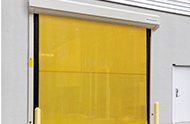 high-speed sheet-type shutter (Japan; Sanwa Shutter Corporation) |
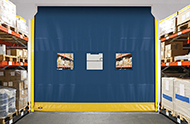 high-speed sheet-type shutter (USA; ODC) |
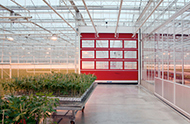 high-speed sheet-type shutter (Europe; NF Group) |
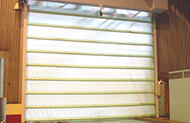 (China; Shanghai Baosteel-Sanwa Door) |
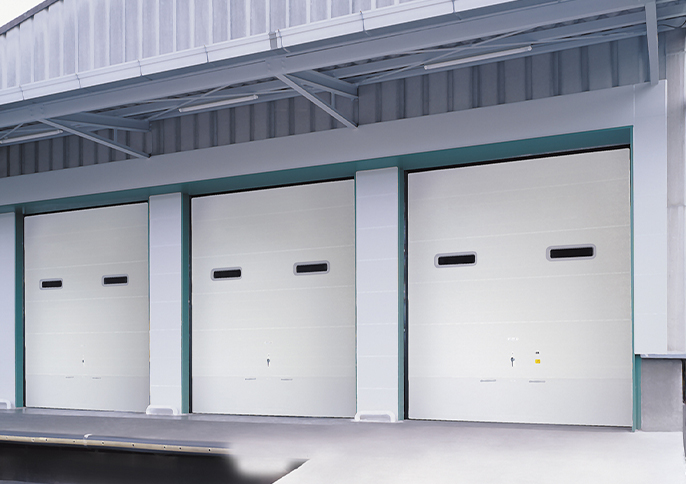 (Japan; Sanwa Shutter Corporation) |
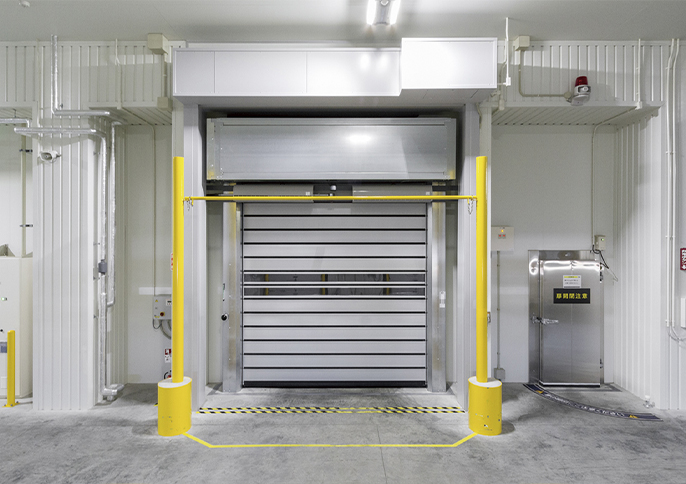 (Japan; Sanwa Shutter Corporation) |
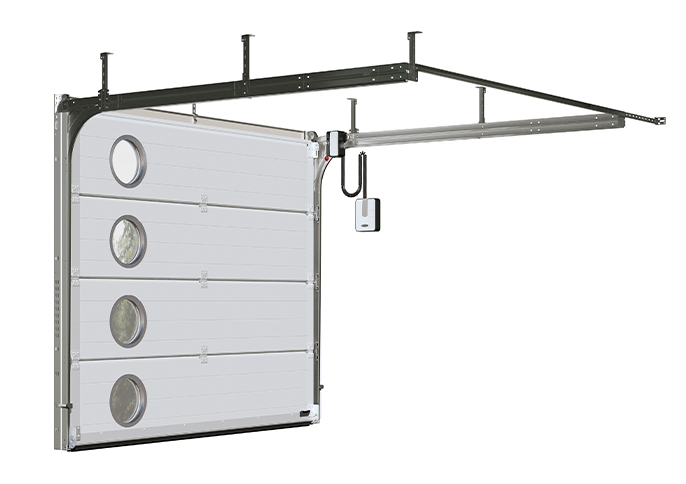 (Europe; NF Group) |
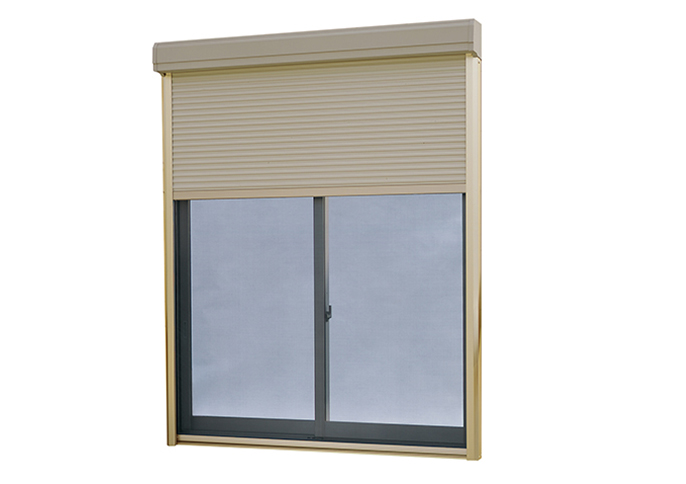 (Japan; Sanwa Shutter Corporation) |
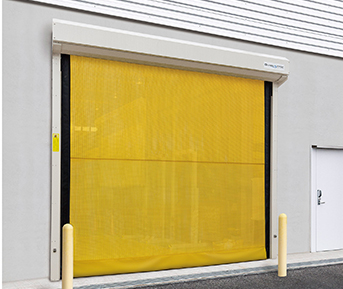
high-speed sheet-type shutter
(Japan; Sanwa Shutter Corporation)
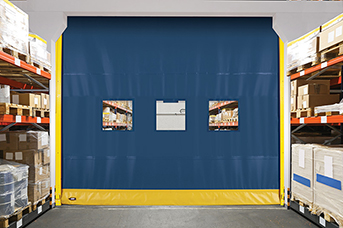
high-speed sheet-type shutter
(USA; ODC)
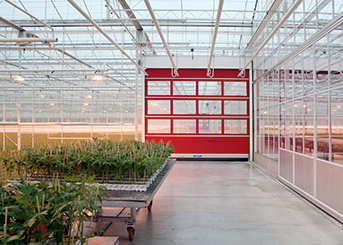
high-speed sheet-type shutter
(Europe; NF Group)
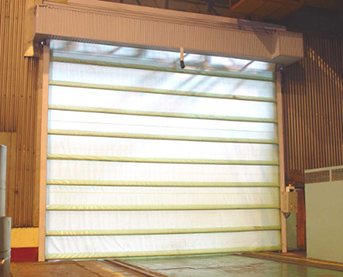
(China; Shanghai Baosteel-Sanwa Door)

(Japan; Sanwa Shutter Corporation)

(Japan; Sanwa Shutter Corporation)

(Europe; NF Group)

(Japan; Sanwa Shutter Corporation)
<Climate Change Adaption Product>
In addition, demand is expected to grow for waterproof products and disaster prevention products to protect city infrastructure and people’s lives from rising sea levels resulting from climate change and torrential rainfall due to abnormal weather. Sanwa Shutter Corporation has a lineup of waterproof products depending on the application, environment, installation method, and so forth, in preparation for frequent large typhoons and torrential rainfall.Moreover, we help to mitigate disaster risks for various openings with our high-strength shutters and high wind pressure-resistant window shutters that are a countermeasure to risks from the wind damage associated with climate change.
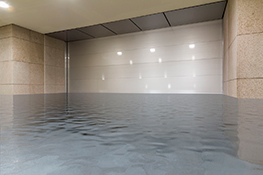 (Sanwa Shutter Corporation) |
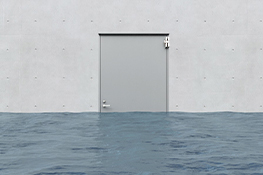 (Sanwa Shutter Corporation) |
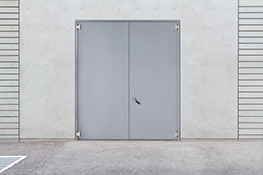 (Sanwa Shutter Corporation) |
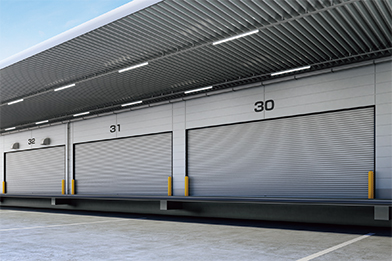 (Sanwa Shutter Corporation) |
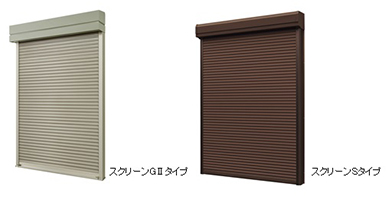 (Sanwa Shutter Corporation) |
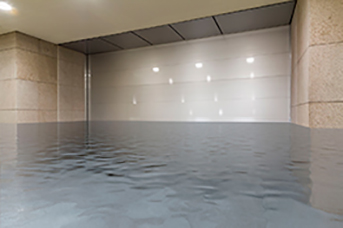
(Sanwa Shutter Corporation)
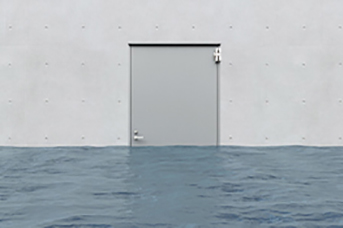
(Sanwa Shutter Corporation)
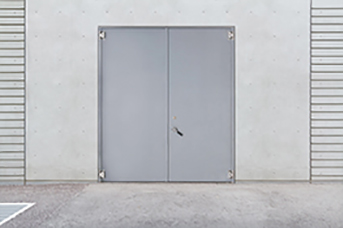
(Sanwa Shutter Corporation)

(Sanwa Shutter Corporation)

(Sanwa Shutter Corporation)
Indices and targets
Long-term environmental goals (qualitative and quantitative goals)
CO2 emission reduction target from business activities (Scope 1+2)
| Qualitative | Quantitative |
|---|---|
| Reduce CO2 emissions at offices and plants to reduce environmental impact |
|
Net sales targets for climate change-response products (Scope: consolidated)
| Qualitative | Quantitative |
|---|---|
| Develop and expand sales of environmentally friendly products that indirectly contribute to reducing GHG |
|
* Announced in the Sanwa Global Vision 2030 Mid-Term Management Plan 2024 in May 2022
Future response
| We engage in flexible and strategic operations and maintain high resilience within both the 2℃ and 4℃ scenarios. We will closely monitor developments in the market going forward and develop approaches and responses that mitigate the impact of climate change in order to prepare for risks and to maximize opportunities |
|---|
・Further sales growth of climate change response products and improved information disclosure
・Add specific measures aimed at reducing CO2emissions
・Expand scope of environmental reporting data, including the Group in Japan, the Group overseas, and Scope 3 emissions